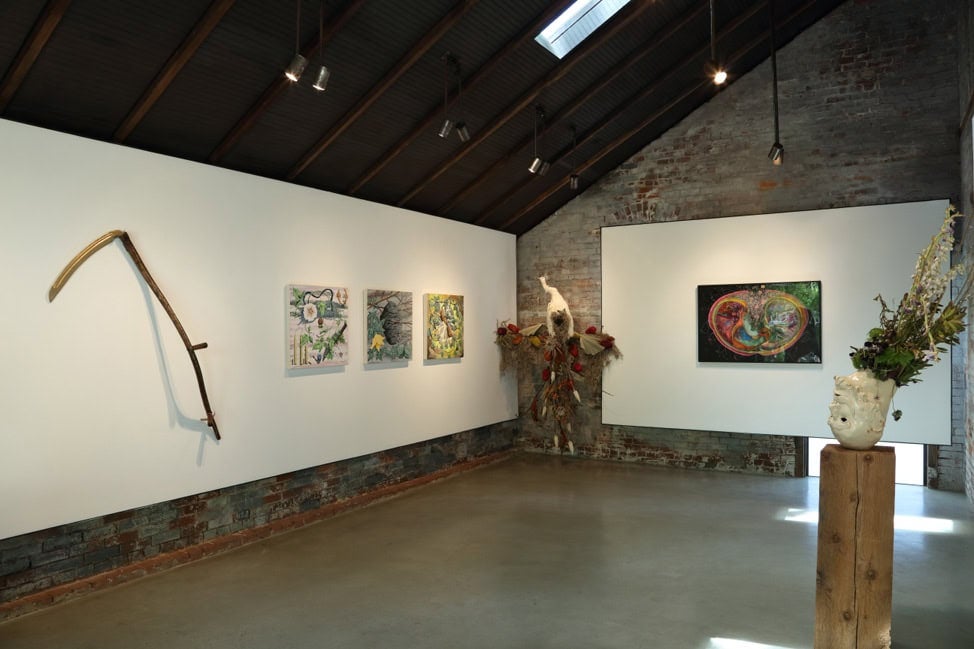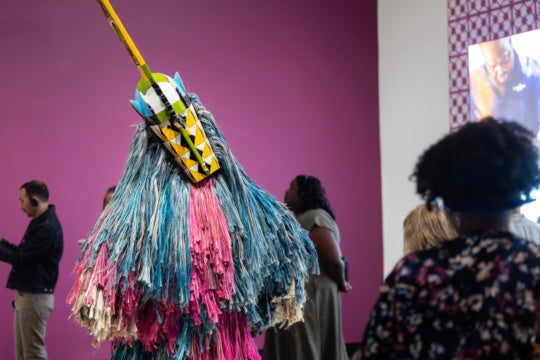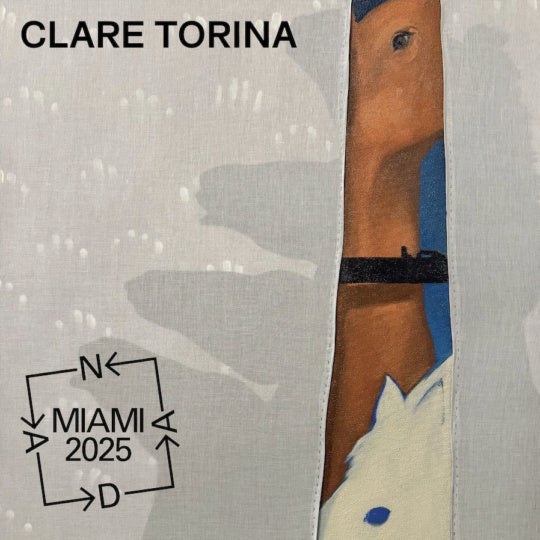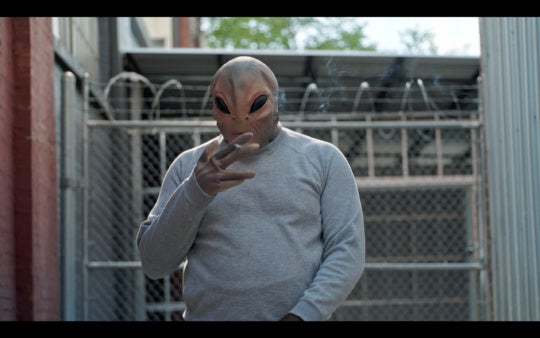
Though Wendy Given and Ryan Pierce have parallel attractions to the Gothic beauty of the natural cycles of bloom and decay, their joint exhibition “Nocturne,” on view at Whitespace through May 7, reveals a somewhat imperfect pairing. Individual pieces can be hauntingly effective, but collectively, the work still feels too disjointed and exploratory to form a unified and effective whole.
The two Portland-based artists devised the collaboration when they spent two weeks camping together as hosts of the outdoors Signal Fire’s Outpost Residency in 2015. Given has Atlanta connections, having earned her BFA at the Atlanta College of Art before her MFA at the Otis College of Art and Design in Los Angeles. Pierce is currently Artist-in-Residence at Portland State University’s School of Art and Design. Most of the work in the gallery belongs to Given. Pierce shows five large paintings and a sculpture. The two artists’ subjects ― poisonous-looking blooms and vines, insects, barren branches and wasp’s nests ― occasionally intersect and intertwine. But Pierce’s vivid palette, surreal aesthetic, and volumetric natural forms don’t always sit comfortably next to Given’s dark traditional approach. Pierce’s brushwork is too loose and painterly and the depicted objects without enough specific weight and volume for the surreal trippiness of the images to hit us with full heft. I wasn’t moved or excited by his lone sculptural work, a stoneware male bust turned upside down and used like a vase. Still, his paintings’ strongest quality is a truly admirable one: objects from the natural world are strangely recognizable though placed in unfamiliar, warped pictorial space.
Given’s particular aesthetic may emerge with more clarity, speed and force, but the Gothic depictions of nighttime animals in barren branches, her beveled oval frames, dark peacock feathers and curling serpents, feel, in the end, too easy and familiar. A large, mirrored acrylic octahedron sculpture occupies a lot of floor space, and it’s an interesting object, but it frustratingly bears little discernable relationship to the other work. Other sculptural objects, including taxidermic birds, feathers arranged into an eerily beautiful, suspended planetlike sculpture, simple clay snakes with hypnotically deep glass eyes, and an ancient-looking, inscribed farmer’s scythe are more closely visually linked to the show’s general thrust, but they are less intriguing as individual objects than that outlying octahedron.
Given’s strongest piece, and I would say the strongest work in the show, is a 2014 chromogenic color print depicting shiny insects climbing on abundant bunches of grapes. The Renaissance-like image precisely articulates a delightfully creepy, clear vision seemingly only alluded to elsewhere in the room: this is nature’s simultaneous, and often indistinguishable, commingling of bloom and rot, sweetness and poison, abundance and decay, beauty and death.
It’s not surprising that two such like-minded artists might identify and celebrate a parallel path through the woods, but in the end, their destinations may simply be too different to form a powerful, unified vision.




